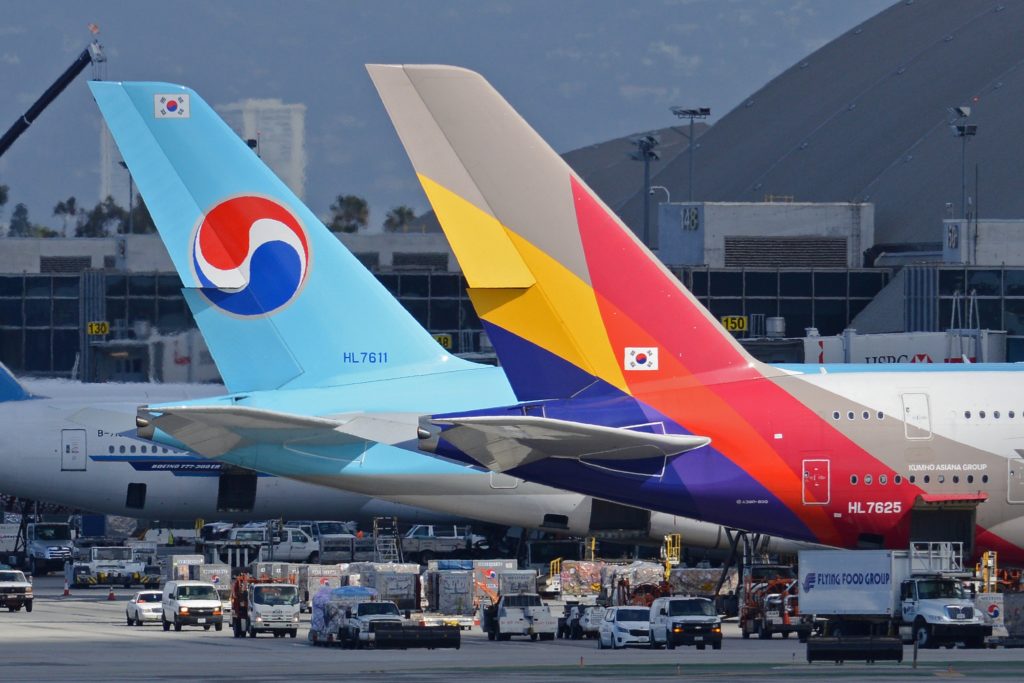The Peninsula
The Historical Momentum behind the Korean Air-Asiana Airlines Merger—New Approach, Same Conclusion

On February 22, 2022, the Korea Fair Trade Commission (KFTC) conditionally approved the merger of the two largest air carriers in South Korea—Korean Air and Asiana Airlines. This approval comes nearly a year and a half since Korean Air’s announcement that it would buy a nearly 64% stake in its sole major domestic competitor for $1.6 billion and form the 10th largest airline in terms of international passenger volume. Moreover, emerging from the COVID-19 era where airfreight has proved to be a pivotal lifeline for strained supply chains, the combined airline would carry the third largest share of international cargo in the world.
Lawmakers and analysts alike voiced alarm over the effects of diminished competition for consumers. The KFTC’s acknowledgement of these concerns represents shifts in internal thinking and approach on this issue within the Korean government; yet, the KFTC’s approval of the Korean Air-Asiana merger was an ultimately predictable move in which Korean firms facing economic turbulence have often consolidated to rationalize the market space.
To understand the context behind the mega airline merger, one must understand the unique historical momentum driving it. During nascent phases of rapid industrialization that started in the 1960s, the South Korean state overcame the lack of private sector capital by actively mobilizing scarce resources and channeling them to companies that promised the most aggressive returns from exports abroad. As a result, this public-private sector collusion cultivated major conglomerates that dominated sectors of the economy. But when strategic industries faced economic headwinds, there was a strong tendency in the Korean political economy to favor mergers and acquisitions of firms active in the troubled sector.
Perhaps the most recent—and most infamous—parallel case study for a state-endorsed merger of Korean conglomerates is the 1998 Hyundai-Kia merger. Kia Motors, which was the flagship of South Korea’s eighth-largest conglomerate Kia Group, collapsed during the 1997 Asian Financial Crisis under $10 billion (appx. $17.4 billion in 2022) of debt. While then-President Kim Dae-jung publicly commented that insolvent firms should be allowed to fail, and Kia’s own management and labor unions supported self-resuscitation, the government was set on a path toward a takeover to save the beleaguered automaker. New management appointed by the creditor banks removed the final roadblocks to a merger by putting an end to the opposition from Kia employees and unions, including a two-month long strike.
In October 1998, the Hyundai Motor Company, Kia’s former main competitor, eventually won the auction for Kia Motors and promised to write off more than $5.3 billion (appx. $9.2 billion in 2022) of Kia’s debt. Under the auspices of the Korean state, it was hoped the merger would strengthen the Korean auto industry through consolidation, and was hailed as a crucial test amid the depths of the 1997 Asian Financial Crisis. The subsequent development of the firm into one of the top ten global automakers, and the steady increase in profits and sales seemed to reinforce the government’s expectations that consolidating the market into unsinkable mega-corporations is worth the price of reducing competition.
Nevertheless, just as the Hyundai-Kia merger sparked backlash in 1998, so, too, has the Korean Air-Asiana merger attracted controversy and criticism in 2022. Asiana employees expressed fears of internal reshuffling stemming from the Hyundai-Kia case, in which Hyundai’s post-merger promotional policies led to a mass exodus of ex-Kia managers. Projections from the International Air Transport Association (IATA) that demand for passenger air travel will not recover from COVID-19 until 2024 added to the alarm as redundant positions will be even more uneconomical.
However, the KFTC’s conditional approval of the Korean Air-Asiana merger demonstrates a much more nuanced debate within the government than had occurred in the heavy-handed, top-down decision which characterized Hyundai’s acquisition of Kia. Similar to the market effects of the consolidation of South Korea’s automotive industry, the Korean Air-Asiana merger is projected to account for about a 50% share of the local market, leading to fears of monopolistic pricing. KFTC acknowledged in its deliberation that the merger of the two airlines carried a high risk of restricting competition and would make mitigation measures inevitable. As a result, the KFTC agreed to the merger as long as several conditions were met: limiting the merged airline’s ability to increase fares or reduce capacity on certain routes, as well as requiring both Korean Air and Asiana to free up slots for a period of 10 years on routes on which they currently have no competition.
The various conditions placed on Korean Air to prevent monopolistic practices in certain routes that would have no immediate competition reflect KFTC’s consideration of domestic consumer protection as well as approval from merger-wary bodies in the European Union and the United States, from which Korean Air has yet to receive an official blessing. While the KFTC decision is thus part of an empirically observed pattern of state-endorsed market rationalization, the language of the decision is one of consumer protection and free market competition.
Andy Hong is a Program Officer with the Korea Economic Institute of America. The views expressed here are the author’s alone.
Photo from Alan Wilson’s photostream on flickr Creative Commons.
